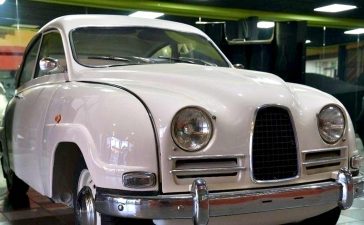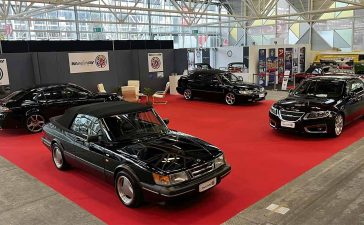Great results for NEVS in the European funded project DRIVEMODE where one delivery is a vehicle with an 800 V battery pack.
Now, NEVS is a part of DRIVMODE, a European Union funded project, part of Horizon 2020. The project started in November 2017 and was planned to end in October 2020. Due to Covid-19 it was prolonged for 5 months. The DRIVEMODE project aims to develop next generation electric drivetrain, the Integrated Drivetrain Module, IDM.
The main goals of the IDM are:
- +50% increase of motor speed
- +30% increase of torque and power
- -50% reduce of losses
Table of Contents
NEVS role in the project
NEVS role in the project is to provide a vehicle with an 800 V battery pack, do the system integration, engine bay packaging, vehicle assembly, testing and a performance evaluation.
You may be wondering why 800-volt battery-driven vehicles?
The latest results from research on 800-volt battery-driven vehicles show that this could lead to smaller, lighter, and more environmentally friendly motors. Cars using these powertrains could also be charged faster and travel further on a single charge.
Lower weight, higher efficiency and faster charging
For many industry observers though, developments to boost the electrical systems of battery-driven vehicles to 800-volts from the current industry standard of 400 volts could be the breakthrough that finally allows electric vehicles to move to the next level and better compete, and eventually replace, combustion vehicles. A necessary transition as Europe strives to lower vehicle emissions and tackle climate change.
Among those companies who have already embraced this technology is Volkswagen Group’s sports car brand Porsche, who have fitted an 800-volt system in their full-electric Taycan sports car, which was launched last year.
Charging time can be greatly reduced when using fast chargers capable of working at up to 270 kilowatts. “If the charger provides 800 volts and a minimum of 300A, the Taycan can charge from 5% to 80% in 22.5 minutes. 400V chargers typically provide 50kW only. The same charging capacity would need 90 minutes,” Bitsche explains. The automaker, which was the first to introduce an 800-volt electrical system commercially, claims a 420-kilometre range between charges for its four-door coupe-styled saloon.
50 percent reduction of losses in the powertrain!
One of the hypotheses from the beginning of the project was that there will be a 50 percent reduction of losses in the powertrain. The assessment will mostly take place in a chassis dynamometer, according to standard test cycles. The output and delivery from NEVS to the project will be documented in a test and evaluation report.
One such advantage is that 800-volt electrical systems allow a greater retention of power, which is normally lost through heat generated during the charging process. A higher voltage system allows a lower current to be used when charging the battery, which reduces overheating and allows better power retention in the system. This power can be used towards a longer driving range.
“Now we are working hard with the test bench activities to finalize the evaluation results and hopefully confirm the hypothesis” says Benny Sondell, one of the team members.
Due to the pandemic the original plan of hosting the final demonstration at NEVS for the European Union Commissionaire and the project members had to be replaced with a webinar held in September 2020.











Very exciting work underway. Keep at it and please keep providing us with updates.
09 9-3 aero V6 XWD